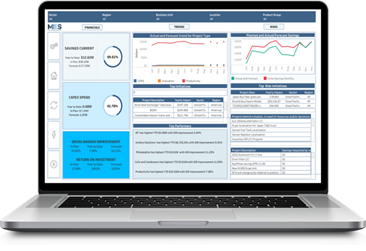Corporate CEOs are analogous to pilots. Pilots fly their planes and take the passengers to their destinations safely. Similarly, CEOs are expected to take their businesses on a growth flight and reward the confidence of their investors. Imagine the following:
Scenario A: You are a pilot of a passenger plane and upon entering the cockpit you discover there are no dashboards. You will certainly not want to fly that plane. Or if you greet the passengers and announce on the PA system that you will be flying without the information needed to take them to their destination safely, the passengers will certainly make a run for the exit door. You would not blame the pilot or the passengers for refusing to be on an unsafe plane. Who wants to be on a flight with non-functional systems and risk their lives knowingly?
Scenario B: The plane has dashboards: some are functional providing accurate information, some have errors, and some are non-functional. The weather forecast is received after the flight has passed through turbulence and the co-ordinates tracker is 50% accurate. You discover this condition after takeoff, midway through the journey. However, passengers are unaware of the state of the systems on their plane. At this point you choose not to inform the passengers to avoid panic. Flying semi-blind you are hoping to take the plane to its destination and land safely. If you are successful, this would be a flight of a lifetime, many movies and awards would follow.
Fortunately, due to rigorous safety practices of airlines and regulatory oversight, scenarios A and B are fictional in the aviation industry.
To a great extent in a business echo system, CEOs face Scenario B:
-
Business systems are not connected
-
Business processes are archaic
-
Data integration is manual with inconsistent analytics
-
Business dashboards and scorecards are backward-looking
-
Decision makers do not have real time visibility to business reports
-
Analytics do not provide actionable insights and recommendations
Yet the CEOs must provide guidance and commitments to shareholders, boards, and analysts. To do so they rely on information rolled up manually and provided to them in periodic updates. The lack of timely and robust information oftentimes results in under commitment to rigorous financial goals. Even with such a conservative approach, businesses often miss their targets. A corporate cost management survey conducted by Bain & Co. concluded:

What if there was an enterprise system for all stake holders? What if CEOs had real time, direct access to accurate information with predictive management indicators and they had visibility to realistic, high confidence targets, provided with early warnings and corrective actions to maintain course? Such a system with relevant dashboards would enable the CEOs and their staff to avoid surprise cloud bursts and bumpy roller coaster performance.

A state of art, cloud-based system with AI applications providing relevant, useful and actionable dashboards would ultimately uplift the financial health and confidence of the business. Instead of information gathering and postmortems of missed targets, the enterprise would channel their talent and resources to focus on proactive execution. The culture of the business would naturally transform from a legacy of assumptions and hedging, to facts and data-driven operations, high confidence decisions and on target arrival!
Margin Expansion Solutions, MES, has developed a unique, cloud-based SaaS for business leaders and stakeholders. The product provides:
-
Auto data ingestion from multiple enterprise systems
-
Real time access to customized reports for executives & stakeholders
-
Dynamic, smart, data & facts-based analytics
-
Predictive insights and prescriptive actions
-
Alerts for proactive interventions and corrective actions
-
Machine learning & AI algorithms for performance assessment
-
Cycle time reduction techniques
-
Ubiquitous visibility on desktop, laptop, tablet, mobile



